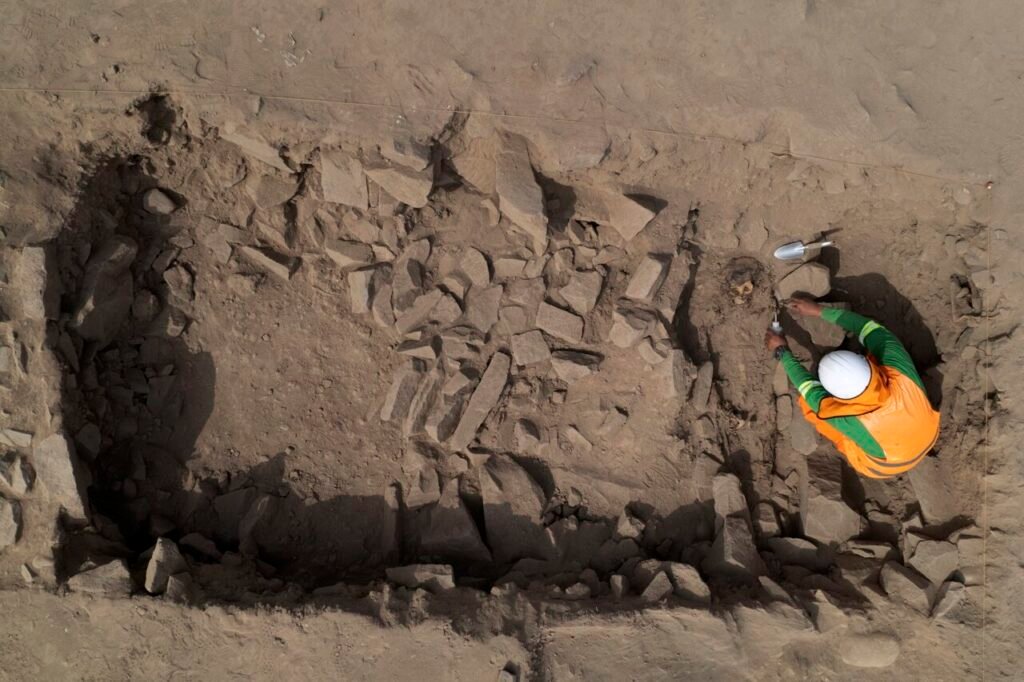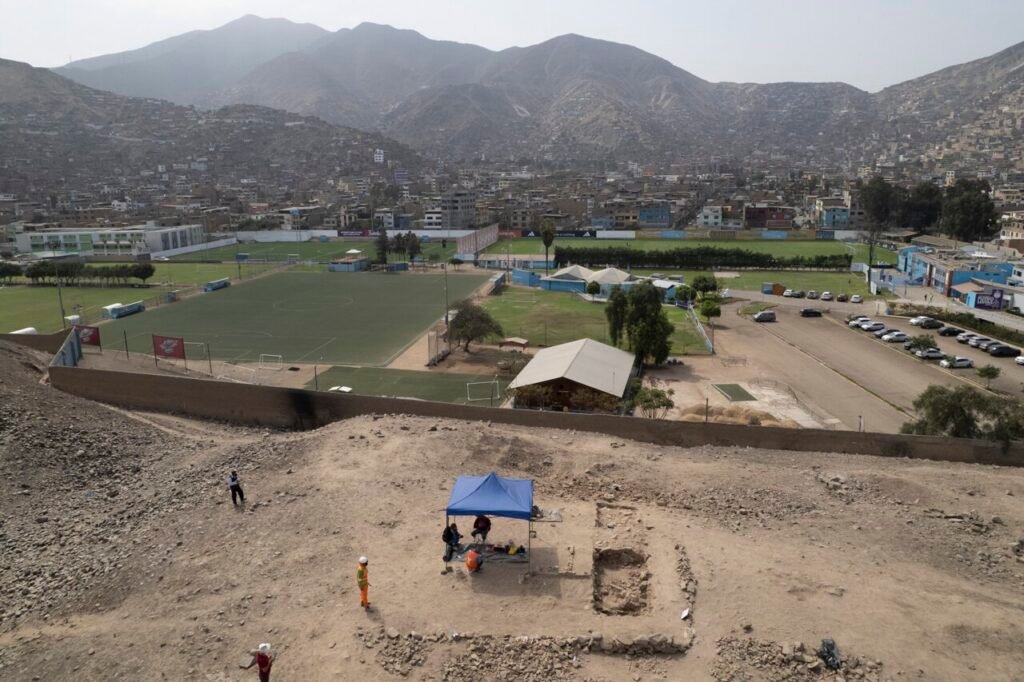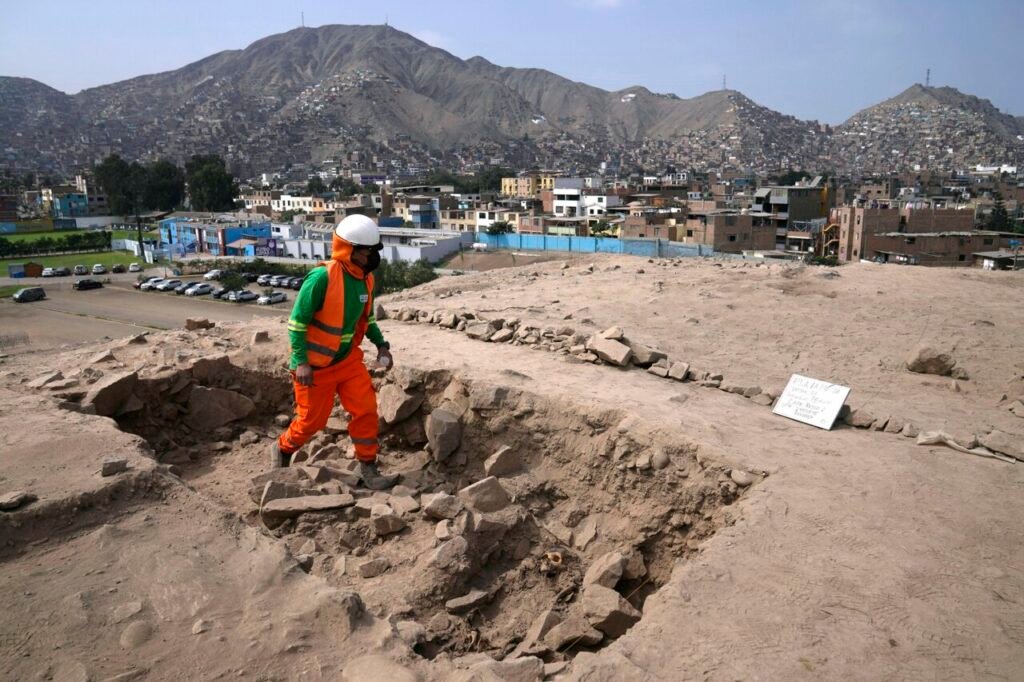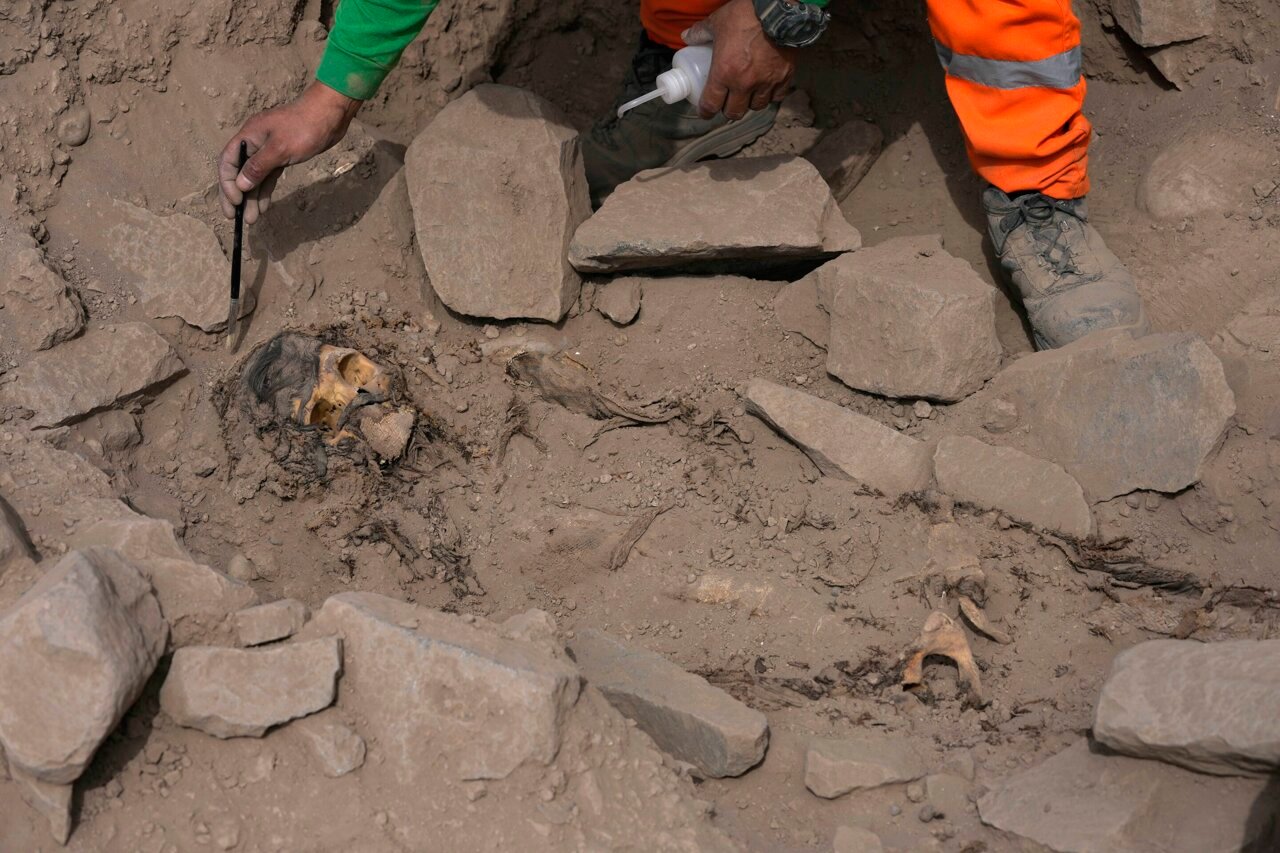Archaeologists made a remarkable discovery near Peru’s capital, unearthing a pre-Hispanic mummy atop a hill next to a professional soccer club’s practice field. The Associated Press team had the opportunity to observe the mummy, which was surrounded by coca leaves and laid facing upwards, showcasing long black hair. Its lower limbs were securely tied with a rope made from vegetable vines, and stones encompassed the burial site, approximately one meter (three feet) below the surface.
Miguel Aguilar, an archaeology professor at the Universidad Nacional Mayor de San Marcos, noted that the mummy had been interred in a ritualistic manner involving coca leaves and seashells. The burial took place atop the remains of a U-shaped clay temple, a common characteristic of pre-Hispanic structures. To determine its age, the mummy has yet to undergo radiocarbon dating, according to Aguilar. The presence of old fly eggs adjacent to the male skeleton indicates that the body had been exposed for several days before being covered with soil.
The discovery was made in Rímac, a district situated on the opposite side of the river with the same name from Lima’s oldest section. Aguilar, who also directs the Historical and Cultural Center of the Municipality of Rímac, led the project. Pieter Van Dalen, an expert in Peruvian coastal archaeology at the Universidad Nacional Mayor de San Marcos, unrelated to the excavation, explained that the rope binding the mummy’s lower extremities reflects a recurring pattern in ceremonial practices. He cited another mummy discovered in a distinct area of Lima, where the body was similarly fastened with vegetable ropes.



During the initial months of this year, the excavation team tirelessly cleared away a staggering eight tons of garbage that had accumulated on the hilltop. This hill sits adjacent to the training field and headquarters of the Sporting Cristal soccer club. In addition, local authorities intervened to relocate homeless individuals and drug addicts who had taken up residence around the hill.
The hill itself, adorned with remnants of ancient mud walls, holds great historical significance as a “huaca” - a Quechua term denoting an oracle or sacred place. Lima boasts over 400 huacas, as reported by the Ministry of Culture.
Lima has witnessed the discovery of mummies and other pre-Hispanic artifacts in rather unconventional locations. Instances include construction workers stumbling upon mummies, often of children, concealed within large clay vessels while installing natural gas lines or water mains.
Surprisingly, there have even been cases of residents themselves making remarkable discoveries. For instance, Hipólito Tica found three pre-Hispanic mummies hidden in a pit within his house’s patio. He maintained secrecy regarding his findings for a quarter of a century until 2022 when archaeologists, with official permission from Peru’s Ministry of Culture, finally removed the mummies.
